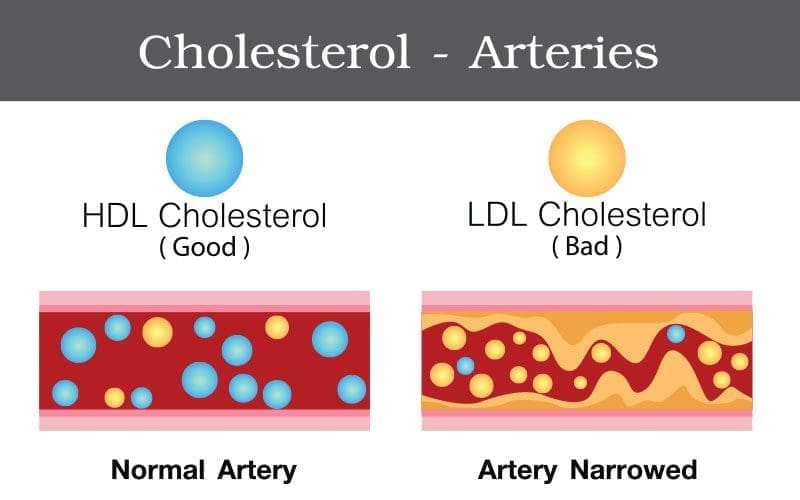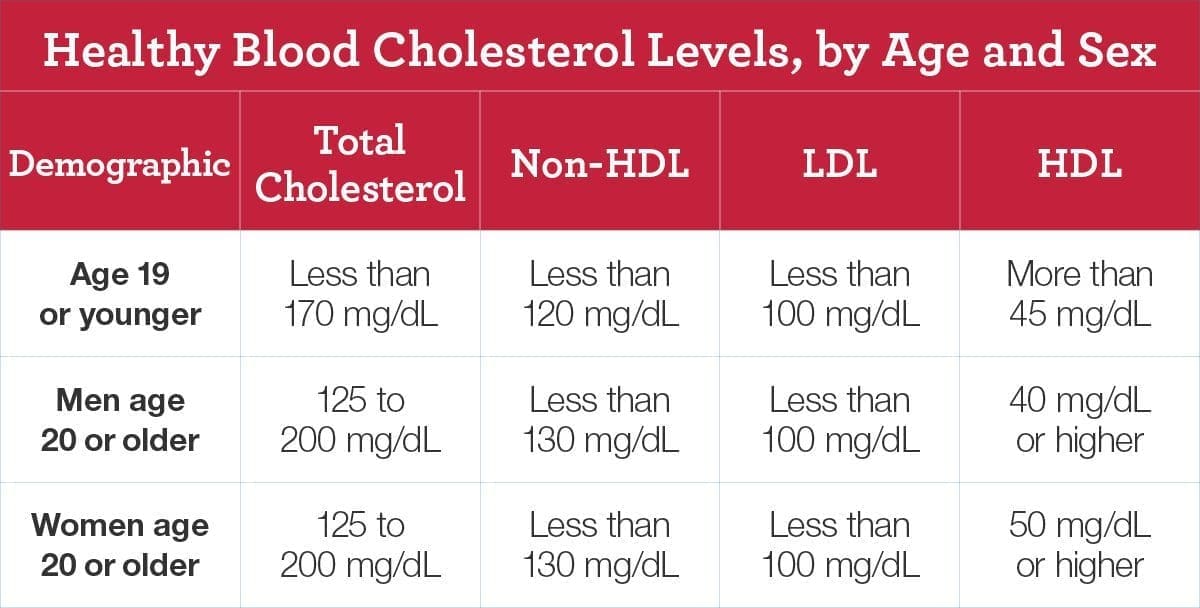
Published: January 18, 2019
Cholesterol: Good vs. Bad
What is Cholesterol?
Cholesterol is a waxy substance found in all of your cells and has several useful functions. It’s carried through your bloodstream attached to proteins called lipoproteins. While cholesterol is essential for good health, too much can be a bad thing.
There are two types of cholesterol: HDL (high-density lipoprotein, or “good” cholesterol) and LDL (low-density
lipoprotein, or “bad” cholesterol).
- HDL “good” Cholesterol. HDL takes excess cholesterol from your bloodstream back to your liver where it is
broken down and removed from your body. Higher levels of HDL are associated with a lower risk of heart disease. - LDL “bad” Cholesterol. High levels of LDL can eventually lead to plaque buildup within your blood vessels and narrow the passageways, causing a heart attack or stroke.
What Causes High LDL?
Genetics, other medical conditions, and some medications are all risk factors for high cholesterol, however, the most common cause is an unhealthy lifestyle.
Unhealthy Lifestyle Habits
- Unhealthy eating patterns
- Lack of physical activity
- Smoking
Genes
In some cases, high LDL is inherited. This condition is called familial hypercholesterolemia (FH). FH is caused by a genetic mutation that affects the ability of your liver to dispose of the extra LDL, which may lead to high levels of LDL and an increased risk of developing heart disease.
Other Medical Conditions
- Chronic kidney disease
- Diabetes
- HIV
- Hypothyroidism
- Overweight or obesity
- Polycystic ovary syndrome
- Inflammatory diseases, such as psoriasis and rheumatoid arthritis
Medications
Some prescriptions that you take for other medical conditions can increase your cholesterol.
Know Your Numbers
According to the Centers for Disease Control, over 31 percent of Americans have high LDL. High cholesterol doesn’t cause noticeable symptoms, so you may not even know you have it.
The only way to find out if you have high cholesterol is through a blood test, called a lipid panel, that measures cholesterol in milligrams per deciliter of blood (mg/dL). See the table below to find out if you have a healthy cholesterol level based on your age and gender.

If you don’t know your numbers, ask your health care provider about getting tested, especially if you have a family history of high cholesterol or heart disease. The earlier you know your numbers, the sooner you can take steps to manage them.
How to Prevent High “bad” (LDL) Cholesterol
Modifying your lifestyle and diet are the best ways to prevent high LDL levels and to keep a healthy level of HDL. This includes:
- Eating a low fat/high fiber diet
- Exercising regularly
- Maintaining a healthy weight
- Quitting smoking
- Managing stress
How to Boost Your “Good” Cholesterol
Heart-healthy lifestyle changes and medications will help increase your HDL levels and lower your LDL levels. Your health care provider may recommend the following lifestyle changes:
Heart-Healthy Eating
A heart-healthy diet that is high in fiber along with plant-based foods.
Foods that can help boost HDL levels include:
- Whole Grains
- Fruits & Vegetables
- Skinless poultry, lean pork, and lean red meat
- Baked or grilled fatty fish such as salmon, tuna, or sardines (in moderation)
- Unsalted seeds, nuts, and legumes
- Vegetable or olive oils
Foods to avoid
- Fried foods
- Fast food
- Processed meats
- Desserts
- Full-fat dairy products
Medication
Your health care provider may prescribe medication if diet, exercise, and lifestyle changes are not enough to lower your cholesterol to a healthy range, especially if you have FH.
If your health care provider prescribes medication as part of your treatment plan, be sure to continue your healthy lifestyle changes. The combination will help lower your LDL levels and increase your HDL levels.
Living With High Cholesterol
If you have been diagnosed with high cholesterol, it is important that you continue with your treatment plan.
Monitor Your Response
Schedule follow up appointments with your health care provider to see how well your treatment is working, if you need to add or change medications, and whether your condition has changed.
Learn the Warning Signs of Serious Complications
High cholesterol can lead to serious cardiovascular complications, such as a heart attack or stroke. If you or someone you know is having the following symptoms, call 9-1-1 immediately. Time saves lives!
- Signs of a Heart Attack
- Chest discomfort or pain
- Shortness of breath
- Cold sweats
- Lightheadedness, nausea, or vomiting
- Jaw, neck, or back pain
- Signs of a Stoke – act FAST
- F – Face: Ask the person to smile. Does one side of the face droop?
- A – Arms: Ask the person to raise both arms. Does one arm drift downward?
- S – Speech: Ask the person to repeat a simple phrase. Is their speech slurred or strange?
- T – Time: If you observe any of these signs, call 9-1-1 immediately.
Data Sources: Mayo Clinic, Healthline.com, National Heart, Lung, and Blood Institute, National Stroke Association